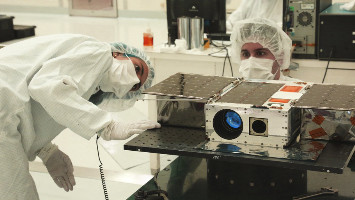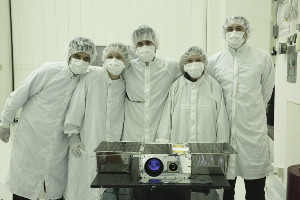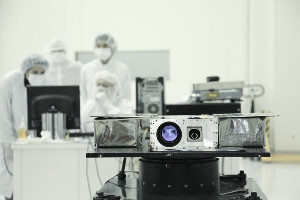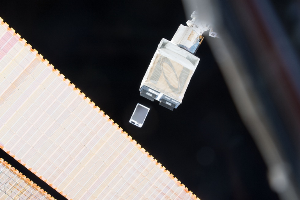| Name | ASTERIA (ExoplanetSat, Arcsecond Space Telescope Enabling Research in Astrophysics) |
|---|---|
| Type | CubeSat |
| Units or mass | 6U |
| Status | Reentry 2020-04-24. Was operational until 2019-12-05, stopped transmitting and responding to commands (NASA news 2020-01-03 checked on 2020-01-04) |
| Launched | 2017-08-14 |
| NORAD ID | 43020 |
| Deployer | NRCSD (NanoRacks CubeSat Deployer) [Quad-M] |
| Launcher | Falcon 9 |
| Deployment | Deployed from ISS on 2017-11-20 |
| Organization | NASA Jet Propulsion Laboratory |
| Institution | Space agency |
| Entity | Government (Civil / Military) |
| Country | US |
| Launch brokerer | Nanoracks |
| Partners | Draper Laboratory, Massachusetts Institute of Technology |
| Oneliner |
Telescope to monitor a single start for two years to find transiting exoplanets. |
| Description |
Prototype nanosatellite capable of monitoring a single, bright, sun-like star for two years. Previously called ExoplanetSat, it develop into a suite of nanosatellites, each focusing on one bright star at a time. The science motivation is to search for transiting exoplanets orbiting the brightest sun-like stars in the sky. |
| Results | |
| Notes |
Used to be 3U ExoplanetSat. NASA then took over. |
| Sources | [1] [2] [3] [4] [5] [6] |
| Photo sources | [1] [2] [3] |
| COTS subsystems |
|
| Subsystems sources | [1] [2] |
| Space photos |  
|
| On the same launch |
Last modified: 2023-12-15




